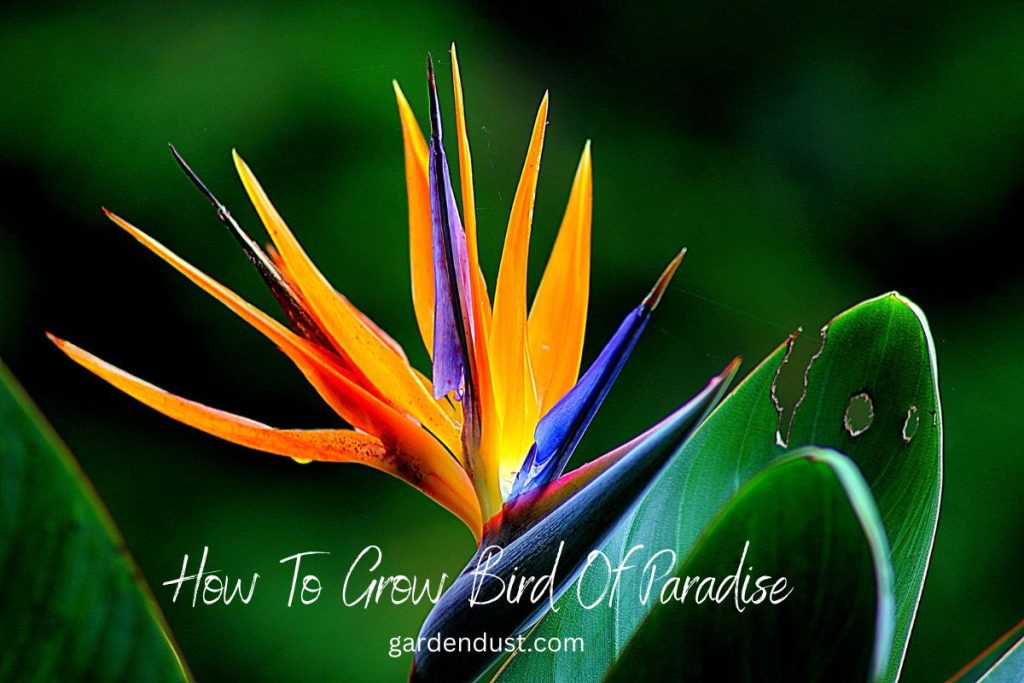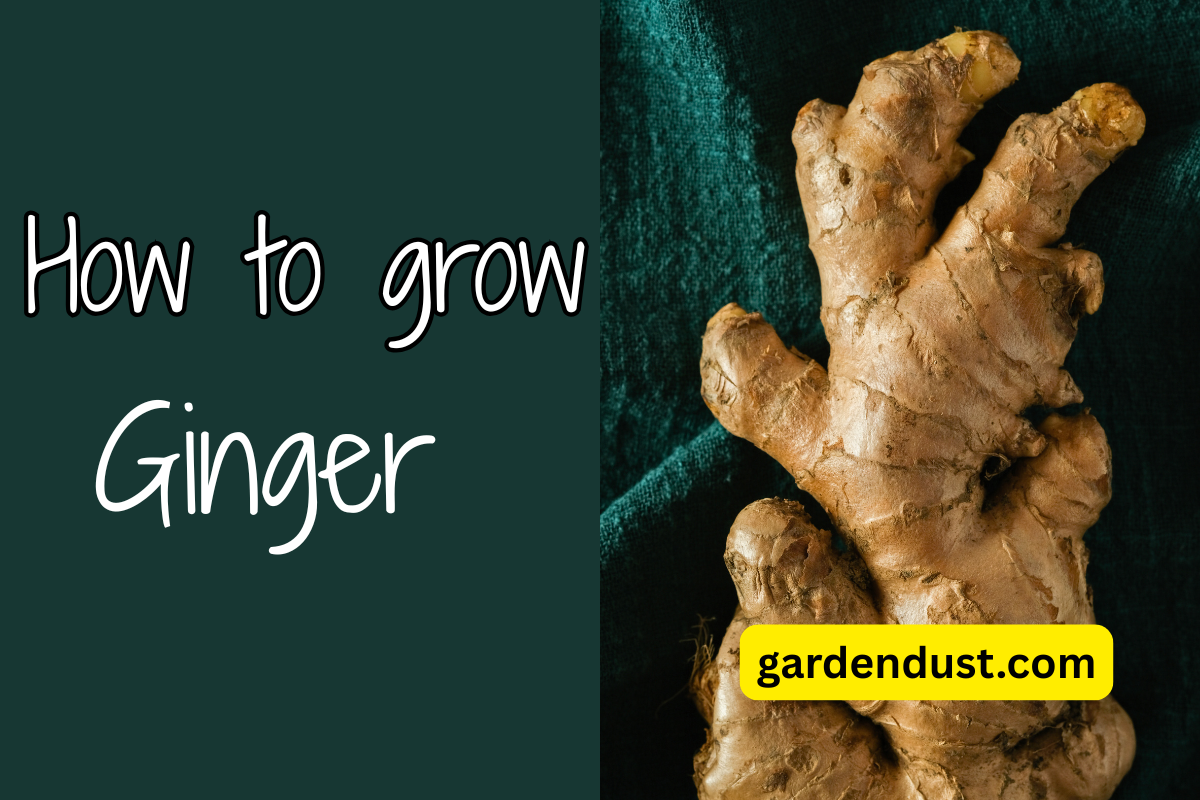The Bird of Paradise (Strelitzia reginae) is a stunning and iconic tropical plant known for its large, banana-like leaves and vibrant, bird-like flowers. Native to South Africa, this exotic plant has found its way into homes and gardens around the world, adding a touch of the tropics to any space. While the Bird of Paradise is relatively hardy, achieving optimal growth and stunning foliage requires a thoughtful approach. In this comprehensive guide, we will delve into the details of How To Grow Bird Of Paradise, providing valuable insights for both novice and experienced gardeners. Let’s start…
Botanical Name- Strelitzia reginae
Native-South Africa
Genus-Strelitzia
Common Name-Bird of Paradise
Plant Type-Perennial
Plant Size-Up to 5-6 feet indoors
Flower- Combination of orange and blue hues
Blooming time- Spring & Summer
Why are they called birds of paradise?
The Bird of Paradise plant earned its common name due to the striking resemblance of its flowers to a bird in flight. The unique and vibrant inflorescence, consisting of orange and blue petals, resembles the plumage of a tropical bird. The flower structure, particularly that of the Strelitzia reginae species, has an uncanny likeness to the beak and plumage of a bird, giving rise to the common name “Bird of Paradise.” This association with the avian world adds to the allure and exotic appeal of this tropical plant, making it a popular choice for both indoor and outdoor gardens.
Variety
The Bird of Paradise plant (Strelitzia reginae) has several cultivated varieties, each showcasing unique characteristics. One well-known variety is the ‘Mandela’s Gold,’ which features yellow flowers instead of the typical orange and blue hues. Another variety, ‘Giant White,’ produces larger white flowers, adding a different dimension to the classic Bird of Paradise appearance. ‘Reginae‘ is a popular variety known for its robust growth and well-defined bird-like flowers. These varieties, along with others, provide enthusiasts with options to explore and diversify their Bird of Paradise collection, each offering its own distinctive charm and visual appeal.
Care for Bird of Paradise
Location
Creating an ideal environment is crucial for the successful growth of Bird of Paradise plants. These tropical beauties thrive in bright, indirect sunlight, mimicking their natural habitat. Choose a location with filtered sunlight or partial shade, as direct sunlight can scorch the leaves. Indoor growers should place their Bird of Paradise near a bright window, ensuring it receives ample light without being exposed to harsh rays.
Soil
Bird of Paradise plants prefer well-draining soil that retains moisture without becoming waterlogged. A mix of potting soil, perlite, and orchid bark is an excellent choice. This combination ensures proper aeration and prevents the risk of root rot, a common issue when the soil is overly compacted. When planting or repotting, ensure the pot has drainage holes to allow excess water to escape, promoting a healthy root system.
Temperature and Humidity
Maintaining the right temperature and humidity levels is essential for the well-being of Bird of Paradise plants. These tropical plants thrive in temperatures between 65°F to 70°F (18°C to 24°C) during the day and no lower than 50°F (10°C) at night. Avoid exposing them to drafts or sudden temperature changes, as this can stress the plant.
In terms of humidity, Bird of Paradise plants prefer higher humidity levels, but they can adapt to average indoor humidity. To boost humidity, mist the leaves regularly or place a tray filled with water and pebbles near the plant. Grouping plants together can also create a microclimate with increased humidity.
Water
Proper watering is crucial for Bird of Paradise plants, as they are sensitive to both overwatering and underwatering. Allow the top inch of soil to dry out before watering, and then water thoroughly until water drains from the bottom of the pot. During the growing season (spring and summer), water more frequently, but reduce the frequency in fall and winter when the plant is in a dormant phase.
It’s essential to strike a balance to prevent waterlogged soil, which can lead to root rot. Adjust the watering frequency based on the environmental conditions and the specific needs of your Bird of Paradise. Pay attention to the leaves; if they start turning yellow, it may be a sign of overwatering, while brown, crispy edges may indicate underwatering.
READ ALSO:-HOW TO GROW AND CARE FOR SILVER SQUILL
Fertilizer
To promote lush foliage and vibrant blooms, Bird of Paradise plants benefit from regular fertilization during the growing season. Use a balanced, water-soluble fertilizer with a ratio like 10-10-10 or 20-20-20. Apply the fertilizer every 4-6 weeks from spring to early fall, following the package instructions for dilution and application.
Avoid over-fertilizing, as this can lead to salt buildup in the soil, causing damage to the plant. In the dormant season (late fall and winter), reduce or suspend fertilization, allowing the plant to rest and conserve energy.
Pruning care
Pruning is an essential aspect of Bird of Paradise care, helping to maintain a healthy and attractive appearance. Remove any damaged, yellow, or dead leaves regularly to encourage new growth. Trim back overgrown or unruly stems to shape the plant and promote a more compact form. Use clean, sharp pruning shears to make clean cuts and minimize stress on the plant.
Additionally, regularly clean the leaves with a damp cloth to remove dust and prevent pests from settling in. This not only enhances the plant’s aesthetic appeal but also allows the leaves to better absorb sunlight for photosynthesis.
Repotting Bird of Paradise
As Bird of Paradise plants grow, they may outgrow their containers and require repotting. Repotting is typically necessary every 2-3 years or when you notice the plant becoming root-bound. Choose a slightly larger pot with good drainage, and refresh the soil to provide the plant with fresh nutrients.
When repotting, carefully remove the plant from its current container, gently shake off excess soil, and inspect the roots. Trim any damaged or rotting roots before placing the plant in its new pot. Water the plant thoroughly after repotting to help it adjust to its new environment.
Pests and Diseases
Bird of Paradise plants may face common pests like spider mites, scale insects, and aphids. Regular inspection and prompt action, such as using a soapy water solution for minor infestations, can help control these issues. Additionally, diseases like root rot and leaf spot can arise from overwatering and poor drainage. Maintaining proper watering practices, ensuring well-draining soil, and addressing issues promptly with fungicides if necessary, are essential to keep Bird of Paradise plants healthy and vibrant. Regular care and vigilance contribute to preventing and managing pest and disease challenges.
Propagation
Bird of Paradise plants can be propagated through division or seeds. During repotting, carefully separate the plant into clumps, ensuring each has healthy roots and stems. Plant these divisions in fresh soil. Alternatively, harvest seeds from mature flowers, plant them in a seed-starting mix, and maintain a warm, humid environment for germination. Propagation provides an opportunity to share the beauty of Bird of Paradise plants and expand your green collection.
Growing a Bird of Paradise is a rewarding experience that brings a touch of the tropics into your home or garden. By creating the right environment, paying attention to watering and fertilization, and addressing any issues promptly, you can enjoy lush foliage and stunning blooms. Whether you are a seasoned gardener or a beginner, following these guidelines will help you cultivate a thriving Bird of Paradise that will be the centerpiece of your botanical oasis. With the proper care, your Bird of Paradise will reward you with its elegant beauty and add a touch of paradise to your surroundings. Happy Gardening….







